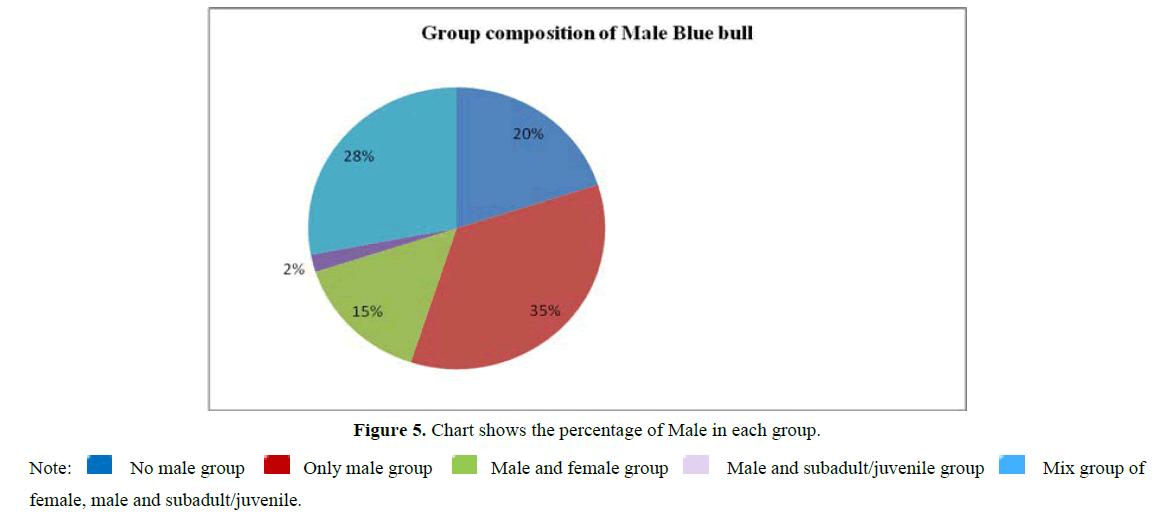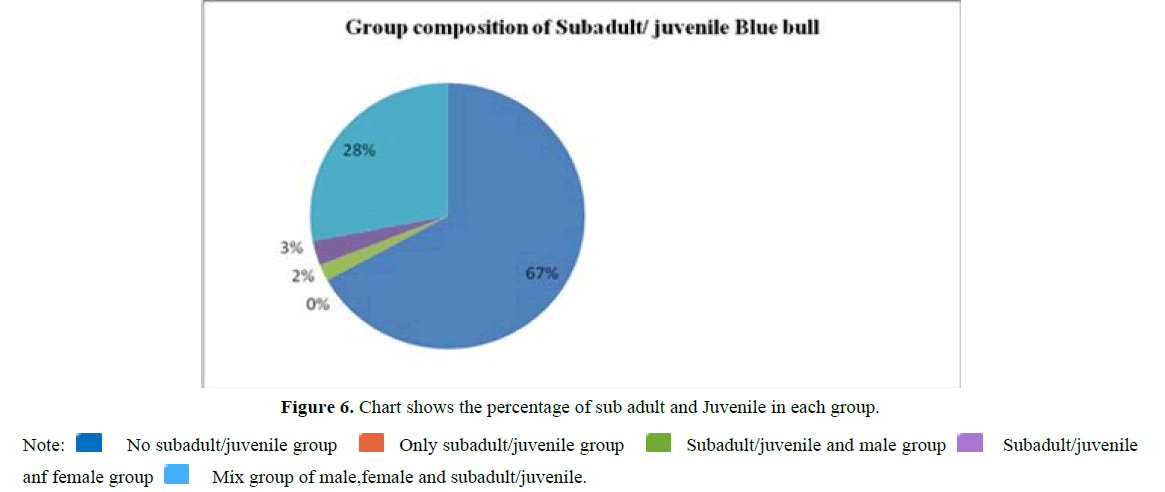Research Article - International Journal of Pure and Applied Zoology (2022) Volume 10, Issue 10
GROUP COMPOSITION STUDY OF BLUE BULL (BOSELAPHUS TRAGOCAMELUS) IN BHAVNAGAR DISTRICT, GUJARAT, INDIA
ViralKumar Vaghela* and Pravinsang Popatbhai Dodia
Department of Zoology, MK Bhavnagar University, Bhavnagar, India
- Corresponding Author:
- ViralKumar Vaghela
Department of Zoology
MK Bhavnagar University
Bhavnagar, India
E-mail: viraldncs@gmail.com
Received: 19-Sep-2022, Manuscript No. IJPAZ-20-9410; Editor assigned: 21-Sep-2022, PreQC No. IJPAZ-20-9410(PQ); Reviewed: 05-Oct-2022, QC No. IJPAZ-20-9410; Revised: 07-Oct-2022, Manuscript No. IJPAZ-20-9410(R); Published: 14-Oct-2022, DOI: 10.35841/2320-9585-10.10.146
Abstract
The Blue bull (Boselaphus tragocamelus) is the biggest Asian antelope. Blue bull (Boselaphus tragocamelus) is also called ?Nilgai? in Gujarat and all over country. Bhavnagar district is located in Saurashtra region of Gujarat near the gulf of Khambhat. In herbivorous animal grouping is the main essential behaviour for survival, searching of food and protection, composition of groups are deferred in different herbivorous animal. Study was carried out during the year 2015-2016. In Blue bull (Boselaphus tragocamelus) out of total 100 observation maximum 31 individual were recorded in single group whereas minimum group size was single individual. Presences of male Blue bull were 39.4% (SD+04.02), female 52.7% (SD+06.15) and presence of sub adult/juvenile were 07.9% (SD +01.29). Data was indicating that presence of female individual than the male was higher. Data also indicate that the group pattern is deferred than the other herbivorous animal.
Keywords
Blue bull, Group, Sub adult, Juvenile, Behaviour.
Introduction
In Gujarat all four sp. of Antelopes are found i.e. black buck, Indian gazelle (Chinkara), four horned antelope and blue bull which are found in India. Out of these four Antelope species Blue bull is widely distributed throughout the state. Except four horned antelope (Chaushinga) remaining all tree species of antelopes are found in Bhavnagar district, Gujarat. Blue bull (Boselaphus tragocamelus) is the biggest Asian antelope. Blue bull (Boselaphus tragocamelus) is also called “Nilgai” in Gujarat and all over country. Bhavnagar district is located in Saurashtra region of Gujarat near the Gulf of Khambhat. In herbivorous animal grouping is the main essential behaviour for survival, searching of food and protection. Group composition and group size are different in various herbivorous animals like black buck, Chinkara, Chital, Four horn antelope and Sambar etc. In ungulates male animal become dominant over the group such type of grouping phenomena was also observed in Blue bull, normally the male blue bull controlled the group and dominant over them. Blue bull (Boselaphus tragocamelus) is not as gregarious as other herding ungulates like Black buck and spotted deer it occurs in small groups throughout the year [1,2].
Study area
Bhavnagar district is located in Saurashtra peninsula of the western part of Gujarat state. Bhavnagar district placed at 210-00 and 220-30’ N. Latitudes and 710-15’ and 720-30’ E. longitudes. Bhavnagar has situated 228 km far from the state capital Gandhinagar and to the west of gulf of Khambhat. Bhavnagar is the fifth largest city in Gujarat and the second largest city of Saurashtra region. Bhavnagar district covers over 8579.45 sq. km area, it includes 269.24 sq. km of forest cover and 985.57 sq. km nonagricultural land. It has an average elevation of 24 meters (78 ft). The district covers total 11 Tehsil (Taluka) Till 2014, after words due to new territorial demarcation, state government declare Botad as new district so some area of Bhavnagar district goes in to Botad district, at present Bhavnagar district covers total 10 Tehsil. Geographically, Bhavnagar district consists of diverse characteristic like uneven, rocky (basaltic) land surface traversed by mountain ranges/ridges. Soil composition of Bhavnagar district is good, it provide fertile soil for crops of commercial value like onion, cotton, groundnuts, vegetables etc. and also for the grains like Bajara, Juwar (sorghum) and wheat etc [3,4].
Materials and Methods
Study area for the grouping behaviour of Blue bull (Boselaphus tragocamelus) covers Bhavnagar city to Alang ship yard, which is about 55 km. study was carryout on both side of Bhavnagar- Hathab- Alang road up to 2 km in right and left side of the area having the agriculture land, barren land, rural forest area and coastal saline land (Khar). Avania (Khar), Pipaliya pul, Bhumbhali, Ghogha, Kuda, Khadsaliya and Mithiviradi were selected for detail study. Observations were made by direct method, to avoid disturbances observation were made from distance with the help of Nikon 8 × 40 binocular and Photographs were taken with the help of Sony HX 400 camera for documentation. Data was analyzed by using standard statistical formula [5-7].
Results
The group composition of different groups of Blue bull (Boselaphus tragocamelus) in the study area, data represent the number of male, female, sub adult and juvenile in a single group. Data also shows the group size of Blue bull (minimum to maximum), total 100 observations were taken to determine the group formation of Blue bull (Boselaphus tragocamelus), maximum number in a single group was observed 31 individual and minimum number in a group was observed 01 individual. Data shows that Blue bull generally remain in a mix group (49%), but some time they also form only male (35%) group and only female (16%) group, sub adult and juvenile prefer to remain with female individual. It was also observed that most of groups having 1-5 individuals in a group (56%) and at same time only few groups have more than 25 individuals in a group (4%). Average of male Blue bull was found 3.31 (39.4 %) SD 4.02, average of female was 4.43 (52.7%) SD 6.15 and average of sub adult/juvenile was recorded 0.67 (7.9%) SD 1.29. Number of male Blue bull ranges between 0-17, number of female ranges between 0-24 and sub adult/juvenile were 0-8 [8,9].
The percentage of male Blue bull (Boselaphus tragocamelus) in different groups, data shows that 20% groups not having any male, 20% groups having single male, 19% groups with 2 male, 12% groups with 3 male, 12% groups with 4 male, 1 % group with 5 male, 1% group with 7 male, 3% groups with 8 male, 1% group with 9 male, 2% groups with 10 male, 3% groups with 11 male, 1% group with 13 male, 1% group with 14 male, 1% Group with 15 male, 2% groups with 16 male and 1% group with 17 male were recorded (Figure 1).
The percentage of female Blue bull (Boselaphus tragocamelus) in different group, data indicate that 37 % groups not having any female, 7% groups having single female, 17% groups with 2 female, 6% groups with 3 female, 2% groups with 4 female, 3 % groups with 5 female, 5% groups with 6 female, 4% groups with 8 female, 3% groups with 9 female, 1%, group with 11 female, 1% group with 12 female, 1% group with 14 female, 2%. Groups with 15 female, 2% groups with 16 female, 3% groups with 17 female, 2% groups with 18 female, 1% groups with 19 female, 1% group with 21 female, 1% group with 22 female and 1% group with 24 female were recorded. Number of female Blue bull ranges between 0-24 [10].
The percentage of sub adult/juvenile Blue bull (Boselaphus tragocamelus) in different group, data indicate that 68%groups not having any sub adult/juvenile, 14% groups having single sub adult/juvenile, 10% groups with 2 sub adult/juvenile, 4% groups with 3 sub adult/juvenile, 2% groups with 4 sub adult/ juvenile, 1% groups with 5 sub adult/juvenile and 1% groups with 8 sub adult/juvenile were recorded [11].
Out of total 100 groups observed during the study, 32 groups having population of sub adult and juvenile of that only 3 groups not having male individual and 2 groups not having female but these groups having sub adult male and not juvenile. It was also observed that all groups having sub adult and juvenile having mean group size 14.2 it was higher than over all mean group size (8.41) and range in 3-31, group having 31 individual was the largest group. During non-breeding season by the process of segregation male form a group in which only adult male individual were found, One unique behavior of Blue bull (Boselaphus tragocamelus) was observed during the monsoon that Blue bull (Boselaphus tragocamelus) was moves towards the shrub land from the open land, probably to protect from the rain, hence during the monsoon large group are seen occasionally and during the winter and summer they are lived in open land in scattered group (Table 1) [12].
Group composition of male Blue bull (Boselaphus tragocamelus) data shows that 20% groups not have any male, 35% groups having only male, 15% groups having male and female both, 02% groups having sub adult/ Juvenile with the male and 28% groups composed of female, male and Sub adult/ Juvenile (Figure 2) [13].
Group composition of female Blue bull, data indicate that 38% groups not have any female, 16% groups having only female, 15% groups having female and male both, 03% groups having Sub adult/ juvenile with the female and 28% groups composed of female, male and sub adult/juvenile (Figure 3).
Grouping pattern in Blue bull is differing than the other ungulates like black buck, chital, sambar, and chinkara. Generally Blue bull thrives in small scattered group and the smallest group of Blue bull is not more than 1-5 Individual likewise the largest group of blue bull is not more than 20 individual often seen the groups having more than 30 individual in the area during the study period (Figure 4).
Group composition of Sub adult/Juvenile in the study area, 67% groups not have any sub adult/juvenile, 02% groups having sub adult/Juvenile and male, 03% groups having sub adult/Juvenile and female and 28% groups composed of Sub adult/Juvenile, male and female (Figure 5).
Figure 5: Chart shows the percentage of Male in each group.
Note: No subadult/juvenile group
No subadult/juvenile group
 Male and female group
Male and female group Male and subadult/juvenile group
Male and subadult/juvenile group Mix group of female, male and subadult/juvenile.
Mix group of female, male and subadult/juvenile.
Presence of male and female individual in a group are also varies than the other ungulates normally one or two male present in a group, often seen that more than two male individual were present in mixed group of blue bull, likewise the presence of female individual was two to three in a mixed group of blue bull. Juvenile and sub adult male and female were also found in a group (Figure 6) [14].
Figure 6: Chart shows the percentage of sub adult and Juvenile in each group.
Note: No male group
No male group Only subadult/juvenile group
Only subadult/juvenile group Subadult/juvenile and male group
Subadult/juvenile and male group Subadult/juvenile and female group
Subadult/juvenile and female group Mix group of male,female and subadult/juvenile.
Mix group of male,female and subadult/juvenile.
Discussion
Findings of the study show that there was no any specific group composition pattern observed in Blue bull (Boselaphus tragocamelus). The group may vary in single day at different time, same behaviour also observed in the present study that group composition vary frequently in a day. Size of the group also found different in agricultural land and forest area, in agricultural land the group remain smaller in size whereas in forest land it become larger. It is possible that while raiding crops Nilgai herds breaks in to smaller groups which presumably reunite when they take to forest cover again. The smaller groups may have a greater tendency to raid crops.
Generally Blue bull seen scattered in one or two individual’s group with the 1-2 male or 2-3 female and in mixed group male, female, juvenile and sub adult are also seen. During the nonbreeding season adult and sub adult male was segregates and form mixed group but some time only male group was also observed, sub adult male Blue bull join in to the group and form a mix group of adult and sub adult during the breeding season. Interestingly a group of only adult male blue bull was regularly observed at Avania khar area during the study.
Observation of the present study also supports the findings of that blue bull (Boselaphus tragocamelus) is non-migratory, although individuals and groups are capable of considerable movement if ambient conditions (e.g., drought), it was observed that the Nilgai remain in the same area for long time and moves in their home range regularly which was recorded up to 8 square kilometer [15].
Blue bull remains in to small groups, the group size varies in different habitat but they rarely form congregations and large groups. Groups ranging from 01 to 10 individuals, and the mean group size observed in Karnali-Bardia in Nepal were 2.9. In Sariska, seasonal group size of Nilgai (excluding single individuals) varied greatly, from 02 to 43 individuals, with a mean group size of 4.0, the study area average of group size was found 8.41 (SD 8.26) individual per group which was higher than the above observations and they recorded total of 108 groups comprising of 1845 individuals and the mean group size was found to be 17.10 ± 4.08. The maximum number of individuals was recorded in Pala sallu (while the minimum was in Sikandarpur Cherat in Aligarh district, Uttar Pradesh. In Aligarh district the Blue bull were congregate in forest patch due to harassment by farmers. In Bhavnagar district the number of individual in a group was vary from minimum 01 to maximum 31 individual in a group, it shows that Blue bull remain scattered in smaller group.
The percentage of animals in different group size categories. 26% groups comprised of 0-5 group category, 22% comprised of 6-10 group category, 20% were in the 11-15 group category, 22% in 16-20 group category and 10% in >21 group category in winter season. While in summer 11% groups were comprised of 0-5 group category, 24% comprised were 6-10 group category, 13% were in the 11-15 group category, 22% in 16-20 group category and 30% in >21 group category in Aligarh district, Uttar Pradesh. In Bhavnagar district the percentage of animals in different group size category were 56% groups having 1-5 individuals, 13% groups having 6-10 individuals, 08% groups having 11 -15 individuals, 11% groups having 16-20 individuals and 12% groups having >21individuals. Blue bull of the study area were prefer to form small groups, small group get benefit when the animal enters in crop field for foraging.
Conclusions
During the study maximum 31 individual were recorded in single group whereas minimum group size was single (01) individual. Presences of male Blue bull were 39.4% (SD+04.02), female 52.7% (SD+06.15) and presence of sub adult/ juvenile were 07.9 % (SD+01.29). Data was indicating that presence of female individual than the male was higher. Data also indicate that the group pattern in the Blue bull is very deferred than the other herbivorous animal like blackbuck, spotted deer and sambar. Blue bull of the study area were prefer to form small groups, small group get benefit when the animal enters in crop field for foraging.
Acknowledgements
We are thanking to Dr. A.H. Shukla (HoD) Zoology department and Principal Sir P.P. Institute of Science, MK Bhavnagar University for permission of the research work. Thanks to Mr. V. Z. Bhatti Principal and all staff Shri Mithiviradi primary school for their cooperation. We express our heartiest thanks to all faculties of Zoology department.
References
- Aryal, M., Panthi, S., Bhatta, M., Magrati, T.P., Shrestha, A.K., Shrestha, P.B., and Karki, A., 2016. Population status, distribution and potential threats of the Blue Bull Boselaphus tragocamelus (Mammalia: Cetartiodactyla: Bovidae) along the Tinau River of Rupandehi District, Nepal. J. Threat. Taxa., 8: 9638-9642.
- Bagchi, S., Goyal, S.P., and Sankar, K., 2003. Niche relationships of an ungulate assemblage in a dry tropical forest. J. Mammal., 84: 981-988.
- Bagchi, S., Goyal, S.P., and Sankar, K., 2004. Herbivore density and biomass in a semi-arid tropical dry deciduous forest of western India. J. Trop. Ecol., 20: 475-478.
- Bayani, A., Tiwade, D., Dongre, A., Dongre, A.P., Phatak, R., and Watve, M., 2016. Assessment of crop damage by protected wild mammalian herbivores on the western boundary of Tadoba-Andhari Tiger Reserve (TATR), Central India. PloS. One., 11: e0153854.
- Chauhan, N.P.S., 2011. Agricultural crop depredation by nilgai antelope (Boselaphus tragocamelus) and mitigation strategies: challenges in India. Julius-Kuhn-Archiv., 432: 190.
- Khan, J.A., Chellam, R., Rodgers, W.A., and Johnsingh, A.J.T., 1996. Ungulate densities and biomass in the tropical dry deciduous forests of Gir, Gujarat, India. J. Trop. Ecol., 12: 149-162.
- Khan, K.A., and Khan, J.A., 2016. Status, abundance and population ecology of Nilgai (Boselaphus tragocamelus Pallas) in Aligarh District, Uttar Pradesh, India. J. Appl. Nat. Sci., 8: 1080-1086.
- Sheffield, W.J., 1983. Food habits of nilgai antelope in Texas.
- Oguya, B.R.O., and Eltringham, S.K., 1991. Behaviour of nilgai (Boselaphus tragocamelus) antelope in captivity. J. Zool., 223: 91-102.
- Taber, R.D., 1967. Indian Wildlife: The Deer and the Tiger. A Study of Wildlife in India. George B. Schaller. University of Chicago Press, Chicago, 1967. 376 pp., illus. $10. Science., 155: 1093-1093.
- Johnsingh, A.J.T., and Sankar, K., 1991. Food plants of chital, sambar and cattle on Mundanthurai Plateau, Tamil Nadu, south India. 55.
- Narendra Prasad, S., and Sharatchandra, H.C., 1984. Primary production and consumption in the deciduous forest ecosystem of Bandipur in South India. Proc. Indian. Acad. Sci,. 93: 83-97.
- Fox, J.L., Nurbu, C., and Chundawat, R.S., 1991. The mountain ungulates of Ladakh, India. Biol. Conserv., 58: 167-190.
- Ali, S., 1979. Bird study in India: Its history and its importance. India. Intl. Centre. Quart., 6: 127-139.
- Swaminathan, S., 1982. Environment: Trees versus Man. India. Int. Centre. Quart., 9: 337-344.
Indexed at, Google Scholar, Cross Ref
Indexed at, Google Scholar, Cross Ref
Indexed at, Google Scholar, Cross Ref
Indexed at, Google Scholar, Cross Ref
Indexed at, Google Scholar, Cross Ref
Indexed at, Google Scholar, Cross Ref
Indexed at, Google Scholar, Cross Ref
Indexed at, Google Scholar, Cross Ref
Indexed at, Google Scholar, Cross Ref
Indexed at, Google Scholar, Cross Ref
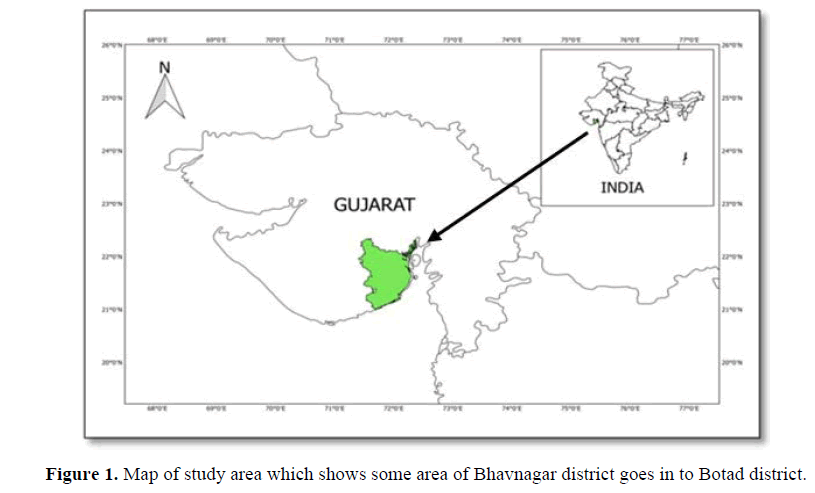
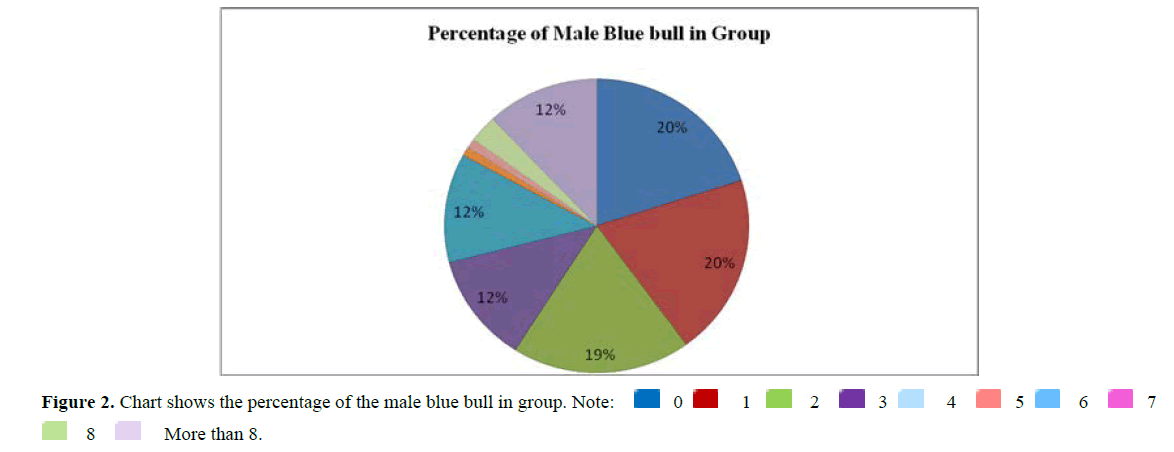

 More than 8.
More than 8.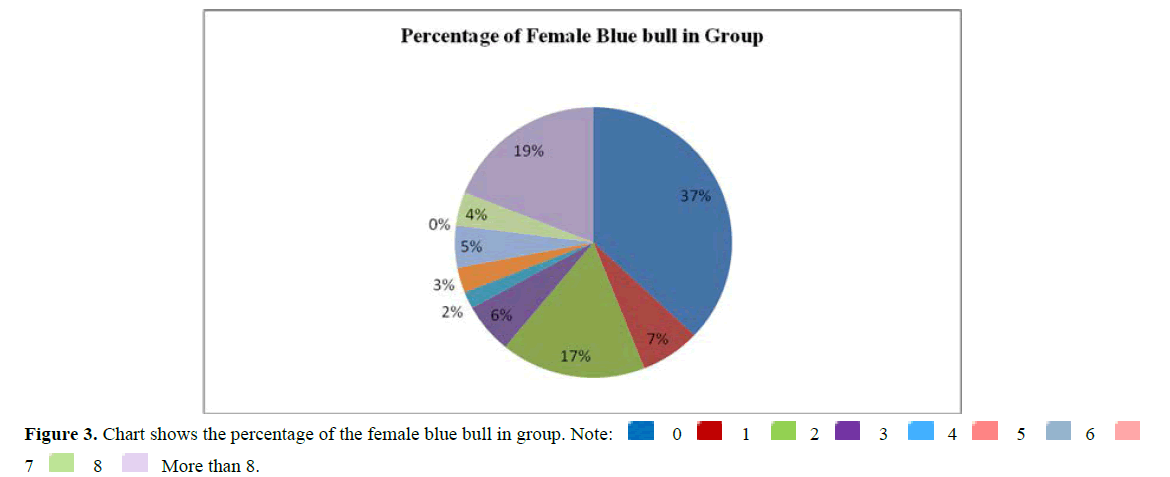

 More than 8.
More than 8.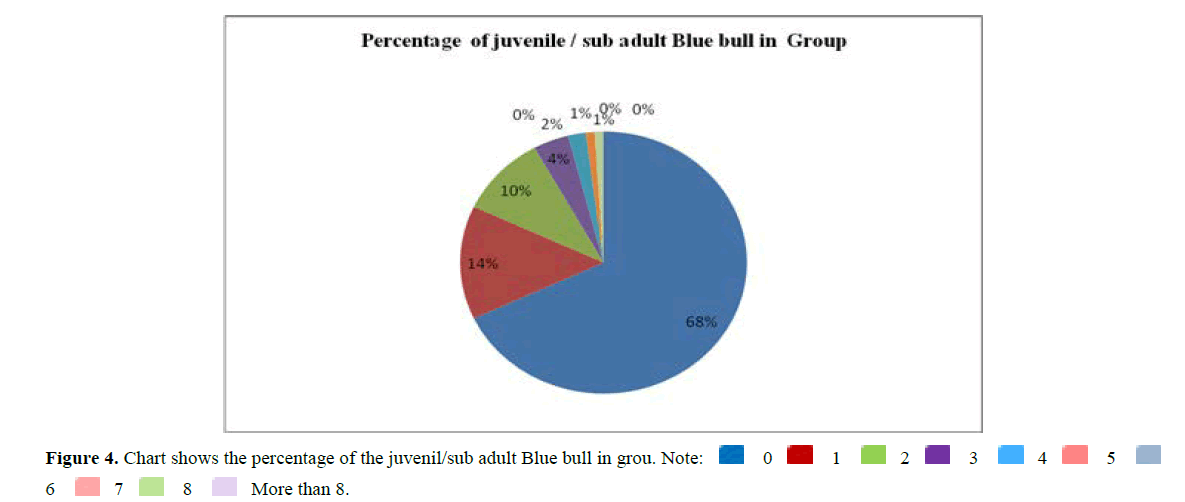
 More than 8.
More than 8.